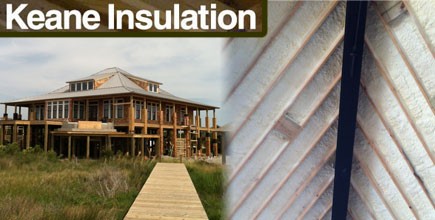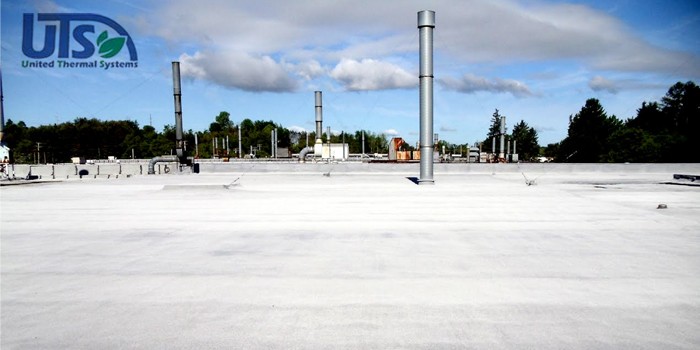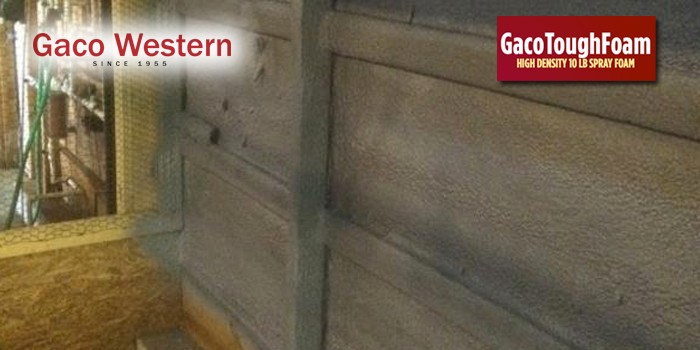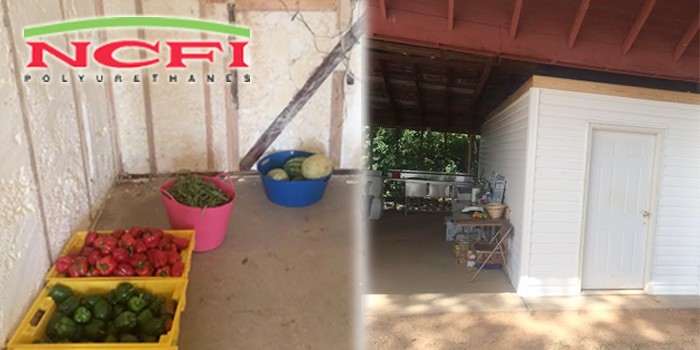Keane Insulation Secures Outer Banks Home With Closed-Cell Spray Foam

AVON, NC – December 26, 2012 – In the Outer Banks of North Carolina, Hatteras Island is known for its beautiful beaches and is a popular spot to build a waterfront home. Dunes protect the area from wind and storm-wash, but builders are still taking precautionary measures when it comes to securing the structures from the elements. Keane Insulation recently applied closed-cell spray foam to a newly constructed home, ensuring it could withstand harsh storm conditions along the coastline.
The homeowner knew what hurricane force winds were capable of after Hurricane Irene damaged many nearby properties back in 2011. "The entire area took a beating," said Neil Keane, Owner of Keane Insulation.
The ocean is no more than 300 yards from the front of the four-bedroom, two-story home and the sound is located just behind it. In order to protect the home from flooding, industrial steel beams were installed to support the structure, keeping it 12 ft. off the ground. The home's great room has a 20 ft. cathedral ceiling and there are 40-plus windows, which offer views from all sides of the property.
Keane wanted to make sure the home was kept at a comfortable temperature, but most importantly, to ensure it was structurally sound to protect it from strong winds that are often common to the area. So they decided it would be most beneficial to apply closed-cell spray foam to the roof deck, walls, and floor joists of the new residence.
In preparation for the application, crewmembers had to be very diligent about overspray protection. Five sets of double doors made of solid walnut were already stained and installed at the exterior entryways on the first floor. The home also had teak wood decks, which wrapped around the entire home. So, it was crucial that the wood not be damaged by overspray and crewmembers used visqueen plastic to cover everything, including the new doors, steel beams, and even wires on the floor. It took about three days just to prepare the home for application.
Keane first applied three inches of Premium Spray Products' FoamSulate 2.0 lb. closed-cell spray foam to the roof deck of the structure, one inch to the walls, and about three inches to the floor joists beneath the house. Crewmembers used scaffolding to access the 20 ft. cathedral ceiling in the great room. Before arriving at the site, other tradesmen had created a platform system while working on ductwork and wiring beneath the home, which Keane was able to use for spraying purposes.
It took a three-man crew about five days to spray the entire area, which totaled over 9,000 square feet. Between preparation, application, and clean up, the entire project took about ten days to complete in October of 2012.
The builder, who has been in the industry for 40 years, wanted to be extra sure of the insulation and security of the home, so he decided to install fiberglass bats along with the spray foam to the roof deck and walls, closing any gaps between the foam and the exterior walls. Keane said the builder has also considered returning to the site to add fiberglass to the crawlspace as well, but Keane would argue that the fiberglass was not necessarily needed, nor as reliable in homes located so close to the water and vulnerable to moisture.
Just as the crew had finished the project, 40 mile per hour winds from Hurricane Sandy started to pick up. The owner was surprised that he could not hear the wind from inside the home and that the house did not budge, thanks to the closed-cell foam securing it.
As they were leaving the site, Keane's spray foam rig did not fare as well. The crew got stuck in water during a storm and had difficulty leaving the area. "We could barely see in front of us," he said. Keane added that shortly thereafter, the road they used closed down completely because it was washed out from hurricane force winds and was not re-opened until recently, forcing residents to take a ferryboat to access the area.
According to Keane, the homeowner is pleased that he chose spray foam because not only is he saving money on heating costs, but he can also rest assured, knowing the product he chose will help maintain the structural integrity of his property, which is located in what has proved to be a very vulnerable environment.
About Keane Insulation: Keane Insulation, based out of Grandy, North Carolina, specializes in residential, commercial, government and industrial insulation applications, and services North Carolina and Virginia. Keane Insulation's portfolio of work ranges from custom wine rooms and sport fishing boats, to encapsulated crawl spaces and 15,000 sq. ft. homes, to the first LEED Platinum Building in Virginia. For more information about Keane Insulation, please use the contact details and links provided below.
Disqus website name not provided.









































